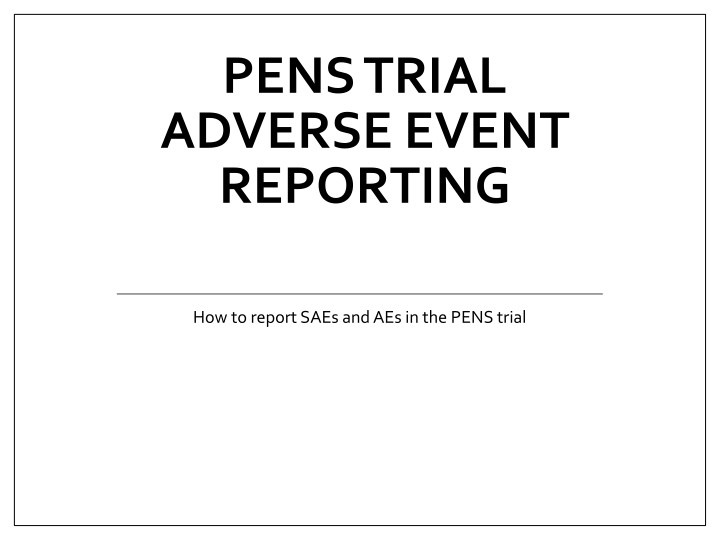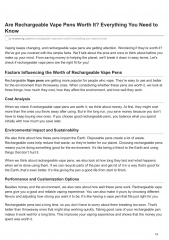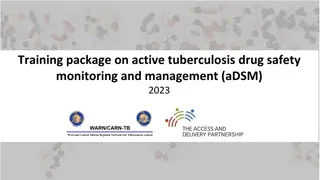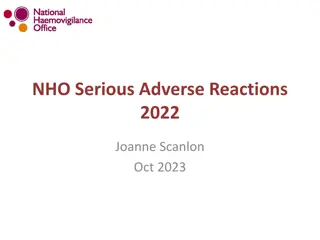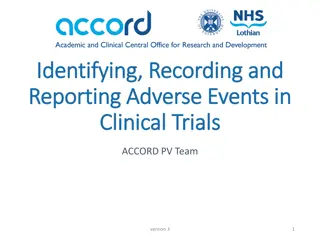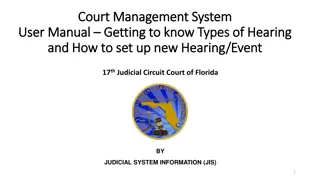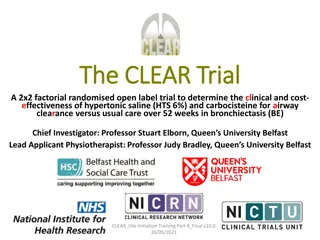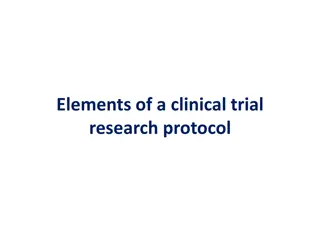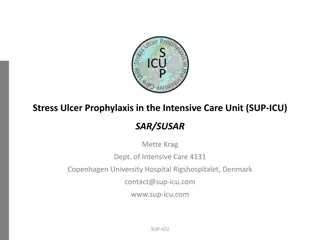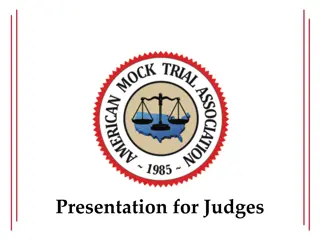PENS Trial Adverse Event Reporting: How to Report SAEs and AEs
In the PENS trial, learn about reporting Adverse Events (AEs) and Serious Adverse Events (SAEs). Understand the criteria, relatedness, expectedness, and process of reporting to ensure patient safety and protocol compliance.
Download Presentation

Please find below an Image/Link to download the presentation.
The content on the website is provided AS IS for your information and personal use only. It may not be sold, licensed, or shared on other websites without obtaining consent from the author.If you encounter any issues during the download, it is possible that the publisher has removed the file from their server.
You are allowed to download the files provided on this website for personal or commercial use, subject to the condition that they are used lawfully. All files are the property of their respective owners.
The content on the website is provided AS IS for your information and personal use only. It may not be sold, licensed, or shared on other websites without obtaining consent from the author.
E N D
Presentation Transcript
PENS TRIAL ADVERSE EVENT REPORTING How to report SAEs and AEs in the PENS trial
Adverse Event Determination.its just like recycling..put the right event in right can! Serious Adverse Events Unexpected Related Adverse Events People usually find AE reporting confusing. But it really boils down to this. If you find a symptom or event after the patient is randomized, it must be recorded in the database if it meets the reporting criteria in the protocol and, if serious, reported to the DCC.
Review-What is an AE? Any untoward event that occurs in a trial subject. A disease, a set of related signs or symptoms, or a single sign or symptom, an event. A Serious AE is an adverse event that prolongs hospitalization, worsens, or causes death or is life-threatening (more on this later) Ex: worsening headaches, sudden decrease in LOC, blood clot, new hemorrhage, double vision, a fever all adverse events and some of these may be Serious Adverse Events. For PENS, record AEs from randomization through 12-month follow up visit. Events occurring after 12-month follow-up visit will not be recorded. Adverse events will be followed until resolution or end of the study, whichever is earlier.
So whats a SERIOUS Adverse event (SAE)? A Serious Adverse Event (SAE) is any event resulting in: Death or life-threatening condition Hospitalization or prolongation of existing hospitalization Significant, persistent, or permanent harm or disability May jeopardize the subject; may require medical or surgical intervention ANY event that the clinical investigator considers serious. This is defined in regulation and therefore not negotiable! Serious Adverse Events SAE) Report SAEs to the DCC immediately upon discovery!
The Process of Reporting AEs & SAEs Once you identify an AE or SAE, then determine: 1. Relatedness-Is the symptom or event related to the patient being in the study? a) Probably, Possibly or Not related to being in the trial 2. Expectedness-Is the event expected or unexpected? a) Expected relating to disease or treatment in the trial and as described in the protocol or consent. b) E.g.-Subdural hygroma, epidural hematoma, IVH, seizure are expected in hydrocephalus. This is not always clear cut, but each aspect must be evaluated!
Question-Which of these are expected adverse events according to the protocol? Wound infection CSF leak Shunt infection Valve failure Seizure Subarachnoid hemorrhage Bacterial meningitis Intraventricular hemorrhage Answer-All of these are Expected adverse events!
Why we report AEs We/FDA/IRB/DSMB care about AEs because we want to know if the trial affects the subjects You are required to report Adverse event as a RC and PI. Then assess relatedness and expectedness Serious related, unexpected, AEs Serious adverse events Serious AE must be reported in 24 hrs to DCC There will be many of these Adverse events Adverse Events
Your mission-to CORRECTLY report SAE and AEs PENS enrolls older patients who may have pre-existing conditions; patients will have adverse events in the study. There may be many S/AEs and they may be difficult to distinguish from their pre-existing conditions. You must report new or worsening events reported per protocol. Events occurring prior to randomization will not be considered adverse events. These events will be recorded as baseline conditions. Always ask the DCC if unsure on when and if to report.
What about pre-existing symptoms? If a symptom or sign was present at baseline (prior to randomization), record it on the Medical History form. You do not need to report that symptom unless symptom got worse. You may have to add a finding to the Medical History form that was found later-e.g. later found to have Alzheimer's disease.
How to correctly report MUST record all baseline conditions-e.g. diabetes, hypertension & hyperlipidemia. These are all baseline conditions. What about late diagnosis of pre-existing conditions? When diagnoses are found later, they can be considered pre- existing since disorder was likely present but not detected. E.g.-Type II diabetes diagnosed 2 days after randomization, this is a pre-existing condition. Thus, NOT an AE. An MRI that was read negative prior to randomization; radiologist reads as a brain aneurysm later (after randomization), it s pre-existing not an AE
What happens when you fail to report? Garbage piles up! Missed AE and SAE reporting is serious What if I miss just a few? Missing even just a few can result in a 483 citation from the FDA auditor You must report AEs (as outlined in the protocol) and all SAEs in the study. It s critical to be very attentive to reporting these correctly You, as the PI, signed the 1572 and YOU are responsible for the accurate, consistent reporting of adverse events
Adverse Event Determination .it s just like recycling..put the right event in right can! Serious Adverse Events Unexpected Related Adverse Events
Abnormal Labs Abnormal labs at baseline are pre-existing and do not worsen are not AEs Abnormal clinically significant lab values will be recorded as adverse events. Site PI will assess severity & relationship Daily, RC & PI will review/record clinically significant labs as AE (or SAE if it prolongs hospitalization).
Im already confused!? Don t be .It s only 4 steps 1. Did you find a new symptom, worsening symptom or clinical finding? 2. Is it Serious? (see serious definition) 3. Is it Expected or Unexpected? (found in protocol) 4. Is it Related or Unrelated? (related to being in the study)
Relatedness: To the being in the trial Well, it could be, I can t prove it s not, so I will choose possibly related. That oughta cover it Relatedness: MUST be determined by PI Not Related, Possibly Related or Probably Related to the clinical study participation Clinical opinion Must have plausible explanation for related PI Guidance says: The tendency for sponsors to default to reporting ..a case seems to have been related to misapplication of the reasonable possibility standard in the definition of associated with the use of the drug. For an individual case, there would generally not be enough evidence to suggest that there was a reasonable possibility that the drug caused the adverse event. Therefore, the event would not meet the definition of associated with the use of the drug and should not have been reported as an IND safety report. (related)
Review An adverse event is: a disease, a set of related signs or symptoms, or a single sign or symptom, an event. Report according to the protocol PI uses clinical judgment especially for relatedness Daily, through the end of the study Report if an existing condition worsens or if a new s/s occurs per protocol
How to report Report SAE to DCC within 24 hours after it was discovered by email, fax, or other Complete entire report within 72 hours If in doubt call the DCC Complete the AE log for all reportable AEs. Do not call the Lead Site PI or discuss these with Dr. Luciano. Call DCC first.
